School Leadership
Case Studies Solving School Problems
Second Edition
Benjamin Piltch and Terrence Quinn

Published by Rowman & Littlefield Education
A division of Rowman & Littlefield Publishers, Inc.
A wholly owned subsidiary of The Rowman & Littlefield Publishing Group, Inc.
4501 Forbes Boulevard, Suite 200, Lanham, Maryland 20706
http://www.rowmaneducation.com
Estover Road, Plymouth PL6 7PY, United Kingdom
Copyright 2011 by Benjamin Piltch and Terrence Quinn
All rights reserved. No part of this book may be reproduced in any form or by any electronic or mechanical means, including information storage and retrieval systems, without written permission from the publisher, except by a reviewer who may quote passages in a review.
British Library Cataloguing in Publication Information Available
Library of Congress Cataloging-in-Publication Data
Piltch, Benjamin.
School leadership : case studies solving school problems / Benjamin Piltch and Terrence Quinn. -- 2nd ed.
p. cm.
ISBN 978-1-60709-951-2 (cloth : alk. paper) -- ISBN 978-1-60709-952-9 (pbk. : alk. paper) -- ISBN 978-1-60709-953-6 (electronic)
1. School management and organization--United States--Case studies. 2. Educational leadership--United States--Case studies. 3. Problem solving--United States--Case studies. 4. Decision making--United States--Case studies. I. Quinn, Terrence, 1946- II. Title.
LB2805.P589 2011
371.2--dc22
2010033057
 The paper used in this publication meets the minimum requirements of American National Standard for Information SciencesPermanence of Paper for Printed Library Materials, ANSI/NISO Z39.48-1992.
The paper used in this publication meets the minimum requirements of American National Standard for Information SciencesPermanence of Paper for Printed Library Materials, ANSI/NISO Z39.48-1992.
Printed in the United States of America
Contents
Preface
It is a truism that U.S. education is changing, and with it, the job description of school leaders is also changing. Whereas in the past, a good school was viewed as one that was orderly, quiet, and well run, today that description has become pass. A good school administrator was seen as someone who knew school management principles, could balance a budget and schedule classes, and could handle paperwork with some degree of efficiency. Todays school leader, on the other hand, must be able to work collaboratively with the entire school community to develop a positive learning environment and maintain a high standard of student achievement. The job today requires an entirely new skill set that includes knowledge of the use of data as a tool to improve school planning, familiarity with new instructional methods, accountability standards, and certainly the ability to do more with less.
In this second edition, we are cognizant of the changes in the job description of school administrators and have introduced new case studies and ideas that reflect new school leadership models for the twenty-first century. These new case studies, like those of the first edition, challenge the reader to reflect on an ever-expanding variety of complex issues. Increasingly, these issues revolve around such vexing dilemmas as motivation of senior faculty, new paradigms of professional development, conflict resolution, more effective leadership styles conducive to human resource management trends, among others.
As veteran teachers, principals, administrators, and college professors with a collective experience of a half century in educational administration in various and diverse settings from poor urban areas to affluent suburban communities, we feel that we have much to offer new and veteran administrators as well as the inquiring public.
In particular, we feel that by sharing some of our experiences in a case study format, we are able to bring focus to some of the many problems, issues, and leadership challenges that todays schools and school administrators are facing.
Targeted audiences for our book include aspiring and practicing school principals and assistant principals, college professors working with candidates for degrees in school leadership, and superintendents, assistant superintendents, and others responsible for the in-service education of administrators.
In addition, we see our book as a tool for the general public (including teachers, concerned parents, and community leaders) with an interest in education to gain insight into the problems and possible solutions to current educational issues.
By sharing some of our experiences, we believe that the case studies lend themselves to thoughtful discussion of actions taken and not taken, as well as alternative strategies to deal with the issues raised. The users of this book will be given ample opportunity to experience many dilemmas faced by real administrators and thoughtfully decide the proper course(s) of action that might positively address these dilemmas.
This book is intended to share the reality of educational leadership with those who are considering or beginning on this road or looking for insights into educational decision making and problem solving. Hopefully it will be a useful tool in the preparation and professional development of school leaders.
Chapter One
Twenty-First-Century School Leadership: Best Practices
Shortly after the retirement of its principal, the Port Valley Central School began the recruitment and selection process for a new school head. A hiring committee of teachers, parents, support personnel, and a student council representative determined the new principal should be a person who espoused, and practiced, leadership standards for the twenty-first century as enunciated by the Interstate School Leaders Licensure Consortium (ISLLC) ( www.wallacefoundation.org ). These ISLLC standards, developed in cooperation with major education organizations, call for a school vision; a vibrant teaching-learning culture; a collaborative working environment; awareness of, and sensitivity to, community needs; understanding of the political and cultural dynamic of schools, and attention to ethical ideals.
The committee was charged with the responsibility to generate a set of comprehensive selection criteria that would measure leadership skills as articulated by the ISLLC standards. Further, the committee was tasked with other significant criteria including ascertaining an applicants educational philosophy, a record of educational achievement, administrative experience, knowledge of instruction and curriculum, familiarity with the use of data as a tool to guide instruction, and oral and written communication skills.
The committee used an assortment of activities to measure the various criteria. A list of the activities included requiring a complete, achievement-oriented rsum and cover letter as minimum requirements before candidates would receive further review. The committee proceeded to narrow the applicant pool based on this initial screening of rsums. A telephone interview with several candidates resulted in a further narrowing of the pool.
Finally, the committee agreed that four candidates would submit to an all-day round of meetings designed to familiarize them with the workings of the school. The committee organized a working lunch with various constituent groups, a tour of the school community, writing sample, and a one-hour interview. This was all followed by a review of references.
After further deliberation, the committee decided that two applicants, Marie Salvato and Kate Redmond, would become finalists for the position of principal. Each presented herself as well qualified for the principalship. Each articulated a progressive educational philosophy with a proven record of accomplishment and a thorough knowledge of curriculum, professional development, and instructional methodology. Each possessed a keen sense of the power of data to improve student achievement.


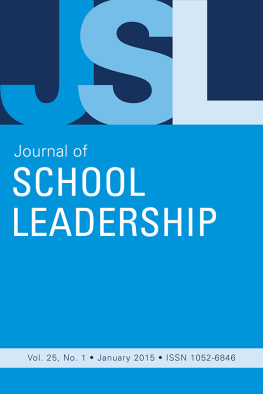


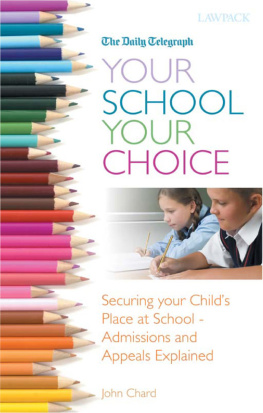

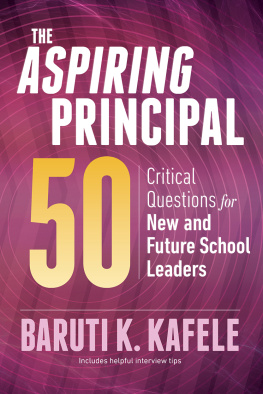

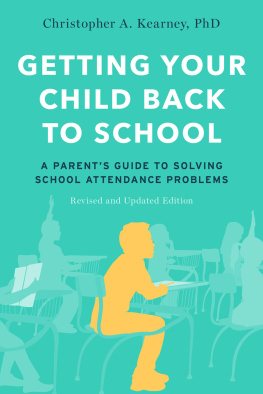


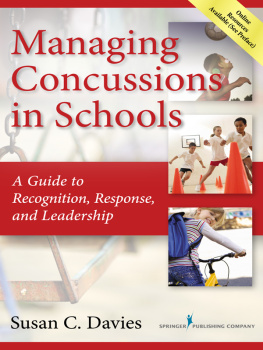

 The paper used in this publication meets the minimum requirements of American National Standard for Information SciencesPermanence of Paper for Printed Library Materials, ANSI/NISO Z39.48-1992.
The paper used in this publication meets the minimum requirements of American National Standard for Information SciencesPermanence of Paper for Printed Library Materials, ANSI/NISO Z39.48-1992.